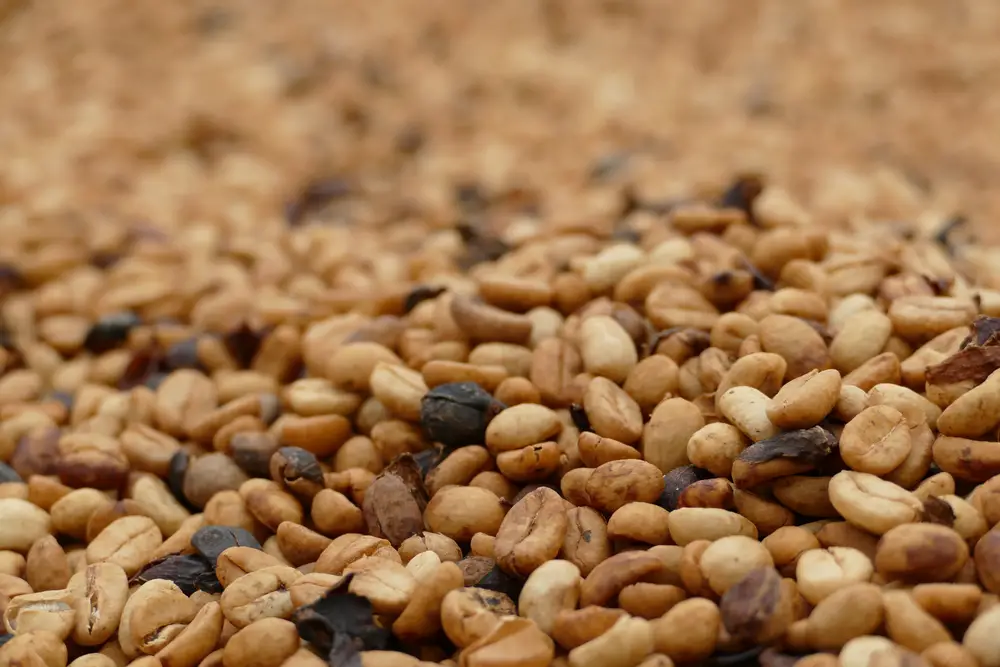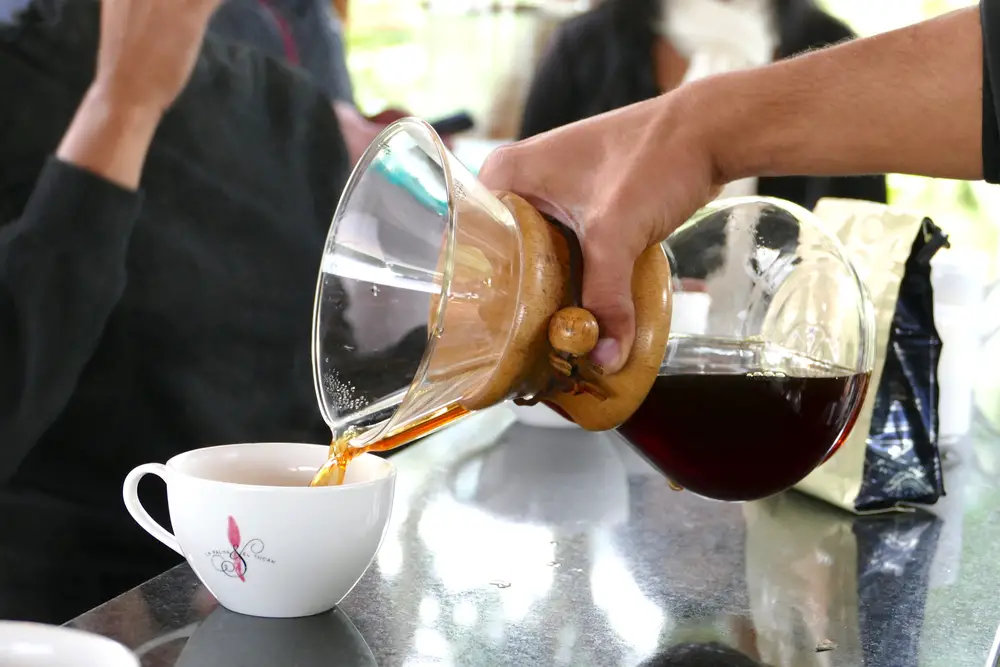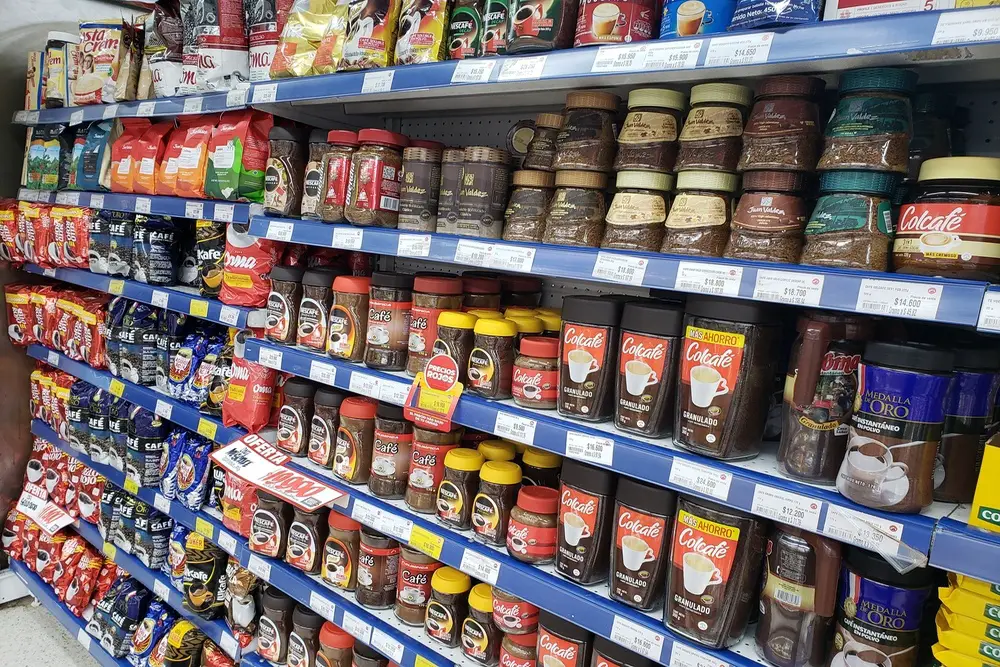Coffee is a product that offers a wide range of variants in terms of its aroma and taste. It all depends on the type of cultivation, and on the market some of these varieties are more expensive than others. And although coffee is generally traded as a raw material, there are also specialties here that are very expensive.
Table of Contents
Black Ivory, Thailand
This coffee variant is extremely rare worldwide because the beans first have to be swallowed by elephants. Once the elephants excrete the coffee cherries with their droppings, they are processed and then consumed.
This invention is attributed to Blake Dinkin, who conducted numerous studies and tests. He was able to confirm that the consumption of this coffee has no negative effects on our body.
Black Ivory from Thailand is currently the most expensive type of coffee in the world.
Cultivation method
The coffee is grown in Thailand at the Golden Triangle sanctuary. There are many elephants living there who have been abused. This foundation gives these animals a second chance.
For Golden Triangle, elephants and their care come first. Therefore, the elephants are not exploited and forced to consume coffee as their only food, as is mostly the case with civet cats.
When making Black Ivory, the coffee beans must go through the following processes:
- After being fed coffee cherries, after a few hours or days, the elephants begin to excrete small coffee beans that have been fermented thanks to the enzymes present in the elephant’s stomach.
- The coffee grains then have to be collected from the dung of the elephants.
- When the grains are collected, they undergo a thorough cleaning that removes all impurities.
- When the beans are completely clean, they are placed in the sun to dry them completely and finally they are sent to roast.
The makers of Black Ivory donate 8% of the total sales of their product to elephant conservation and care.
Characteristics
Obtain one kilo of Black Ivory, the elephants are fed at least 8 kilos of Thai Arabica coffee cherries, which explains the price of the product.
After completing the entire manufacturing process, the recipe must be completed by professionals who hand grind the coffee beans and complete the recipe in an old-fashioned coffee pot, and all of this happens at the same table where the cup of coffee is served.
Those who have tasted this coffee describe it as a coffee with very mild aromas and flavors.
Price range
It is estimated that a cup can cost anywhere from $40 USD to $50 USD. A pound can cost up to USD 1,500.–.
Kopi Luwak, Asia
Like Black Ivory, this variety of coffee is made from animal excrement, but this coffee has become so popular that production has surged.
Cultivation method
Civet cats naturally select the best coffee cherries and, with the help of enzymes, excrete the fermented coffee beans in their stomach. Man realized that the coffee tastes significantly sweeter after the animal’s digestion process.
Produced primarily in Bali, Indonesia, Kopi Luwak goes through a process similar to Black Ivory coffee.
- The coffee cherries are fed to the animal, which defecates a few hours later.
- The coffee beans are collected, washed and dried in the sun. Then follows the usual coffee production.
Characteristics
Unlike Black Ivory, Kopi Luwak has become more readily available due to its popularity in recent years.
Kopi Luwak is described as coffee with few bitter notes, leaving a caramel flavor in the mouth instead.
Unlike black ivory coffee, the production of this coffee variety is not regulated, which has led to the abuse of civet cats. Many of the civet cats are fed exclusively on coffee.
The popularity of this coffee has led to many counterfeits. It is not possible for the end consumer to verify the actual manufacturing process. It is estimated that only 10% of the coffee sold as kopi luwak passes through the civet’s stomach.
Price range
A cup of Kopi Luwak costs between USD 65 and USD 80. A kilo can cost up to USD 1,000.–.
Geisha, Hacienda la Esmeralda
Hacienda Esmeralda is the world’s largest producer and exporter of geisha coffee. The main importers of this type of coffee are Asian countries that are fonder of black tea, such as Japan and China.
Cultivation method
Geisha coffee is grown on the slopes of Mount Baru in Panama, where the coffee trees are sheltered by guava trees that serve as shade trees.
All production of this coffee takes place at Hacienda La Esmeralda, although the growth of this variety of coffee can be slower than other coffee plantations with the traditional beans.
Characteristics
Due to the cultivation method and the rich Panamanian soil, the taste of geisha coffee is very mild. The usual bitterness of coffee almost completely disappears.
This type of coffee has fruity and floral aromas and flavors and is often compared to black tea.
Price range
Excellent quality is guaranteed at Hacienda La Esmeralda. 1 kilo can be from USD 55.– to 1,000. — costs.
Finca el Injerto, Guatemala
What the world’s most expensive coffees have in common is their small production volumes. The same applies to that of the Finca el Injerto offered product.
Cultivation method
The coffee is grown in Huehuetenango, Guatemala, where there are exceptional climatic and geographic conditions and the coffee trees are 1670 meters above sea level.
Characteristics
In addition to the above conditions, farm El Injerto also cultivated sugar before growing coffee.
It is likely that this fact changed the soil conditions, eventually resulting in a sweet bean with fruity and floral aromas.
This coffee has already been awarded the “Cup of Excellence” several times.
Price range
A kilo of this coffee costs up to USD 1,000.–. One should buy this coffee from reliable stores as sometimes counterfeiting happens.
Blue Mountain, Jamaica
This type of coffee is very special as the coffee used to grow it is an heirloom variety from the region.
Cultivation method
Some special features in the production process are:
- It is grown on around 6,000 hectares on the blue mountain, hence its name.
- Arabica variant called Típica is grown, which is not only of excellent quality but also very resistant to pests and diseases.
- It is grown between 500 and 1,000 meters above sea level.
Characteristics
Thanks to the minerals provided by Jamaican soil, this coffee variety is often described as sweet and creamy.
Blue Mountain possesses sweet aromas and flavors with hints of nutty and chocolate. Some experts explain that this is due to the cloudiness of the sky in this part of the world.
Price range
Because of the conditions required to grow and harvest this coffee, its high market value is justified. A kilo can cost between USD 80.00 and 200.00.
Kona, Hawaii
Although there are more expensive types of coffee than this, Kona coffee is perhaps one of the most exclusive in the world due to the very small production volume.
Cultivation method
Kona coffee is grown only on the Big Island of Hawaii, on the slopes of the Hualalai and Mauna volcanoes loa.
The taste of this coffee is determined by the island’s climate, as there are no trees on the slopes of the volcanoes to protect the coffee plants, but the result is delicious.
Because of the particular area where this wonderful coffee is grown, growers cannot expand their coffee plantations even if they wanted to.
Characteristics
Thanks to all the factors that affect the taste of the fruit, a coffee with balanced aromas and flavors with some hints of cinnamon is obtained.
Some experts advise brewing this coffee in a French press to fully enhance its aromas.
Price range
A kilo of Kona coffee costs between USD 60 and 160.
St. Helena
Like all of the world’s most expensive coffees, this one is grown on a small, remote island in the South Atlantic where Napoleon Bonaparte lived in exile.
Cultivation method
The cultivation of this type of coffee is usually made difficult by the climatic conditions of the island, since it rains a lot during a large part of the year.
Characteristics
This type of coffee is particularly sweet, with notes of caramel and citrus fruits, without the usual bitterness of coffee.
Price range
A kilo of St. Helena coffee costs around USD 160.–.
Molokai coffee, Hawaii
This coffee is very similar to Kona coffee, however this variant is far less popular but meets the same requirements.
Cultivation method
Hawaiian laws are extremely meticulous in cultivating their coffee. To be called Molokai, the bean must have a moisture content of between 9% and a maximum of 12%.
Characteristics
The coffee grown is a red Catuaí variety. Thanks to the volcanic soil on which it is grown, the coffee has a mild flavor and aroma with hints of caramel.
Price range
For this variant to be called Molokai coffee, unlike Kona coffee, it must be of the same quality throughout production.
A kilo of Molokai coffee costs between USD 40 and 150. The packaging must state that it is Molokai.
Maragogype coffee
This coffee variant is almost a myth, as it is a mixture of Arabica and Liberica coffee. However, it is not certain whether this was a coincidence, a work of nature or man.
Cultivation method
This type of coffee is grown like any other. However, the fruits are between 30 and 40% larger than Arabica beans.
It is mainly grown in Mexico and Nicaragua.
Characteristics
The taste of the bean depends very much on the production and place of manufacture, however, this bean mostly has sweet and delicate aromas and flavors with hints of chocolate and cherry.
Price range
While this bean lacks extravagant features like being grown near a volcano or being fermented by animals, it tends to be expensive. A kilo of Maragogype coffee costs between USD 30 and 100.



